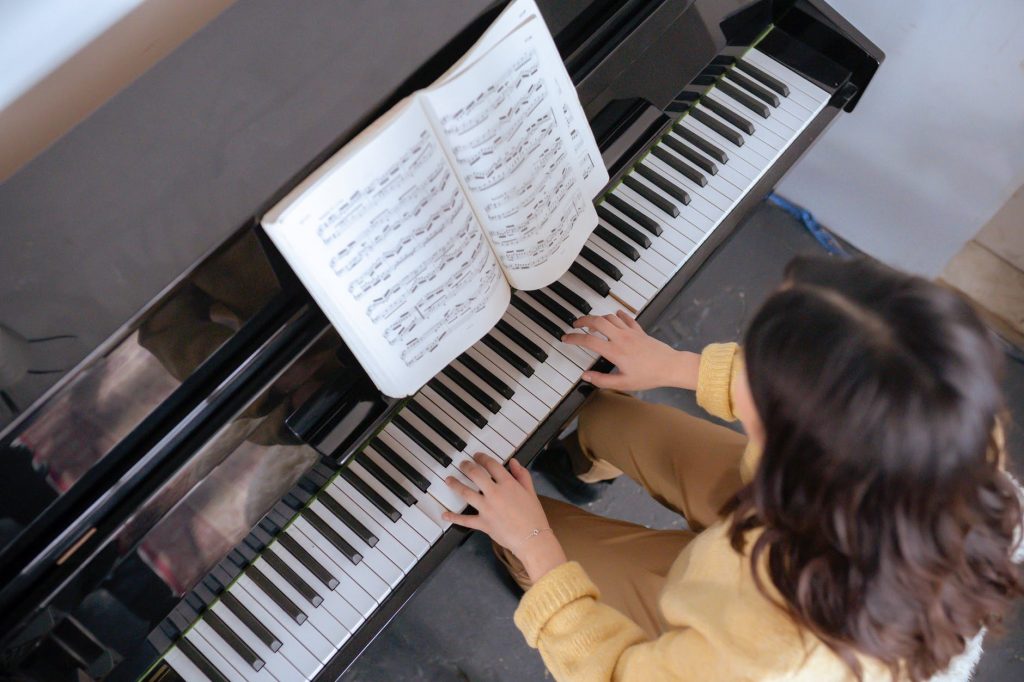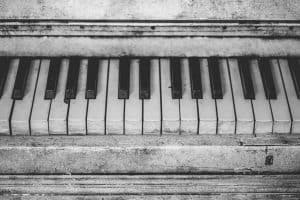Understanding the treble clef is one of the first and most important steps when learning to read sheet music. If you feel like your right-hand notes aren’t as confident as you’d like, don’t worry Skoove is here to help you build a solid understanding of the treble clef.
In this article, we’ll break down the essentials of the treble clef, show you how to read it and share handy tips, mnemonics and practice strategies to help you feel comfortable and fluent on the upper staff. Let’s get started.
What is the treble clef?
The treble clef is a symbol musicians use to notate pitches above and around middle C on the piano. This symbol is how the right hand of the piano is notated. It is used by many other instruments such as violins and flutes. The treble clef symbol is also known as G clef because it describes the location of G, specifically the G above middle C or G4.
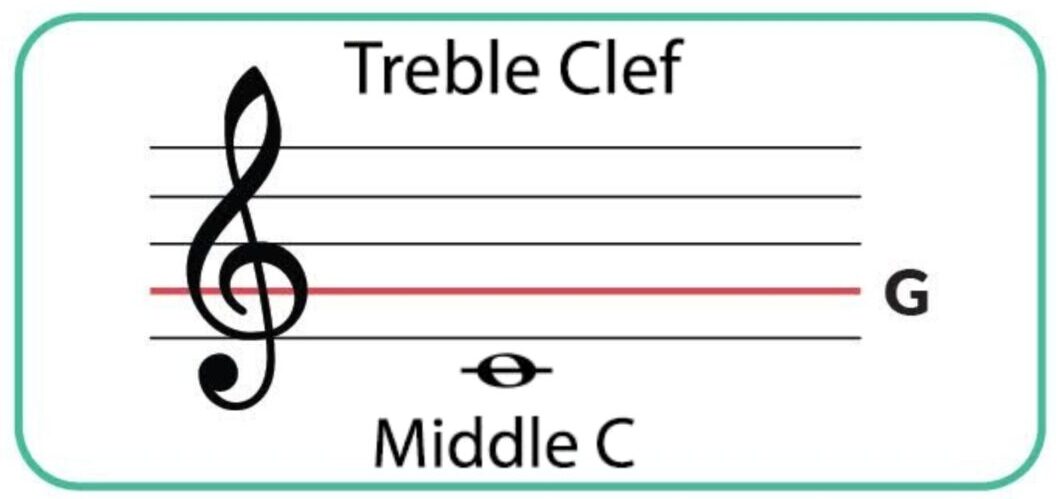
Let’s take a look at how to draw a treble clef.
What are the treble clef notes on a staff
Want to know how to read treble clef piano notes? You will first need to understand the staff. A staff is a set of five horizontal lines that help us read pitches in sheet music. Musical notes are placed on these lines and the spaces.

The placement of these notes shows us what pitches to press and how to play piano music. When you place a treble clef on the staff, each line and space then has a specific note name assigned to it on the treble clef staff.
How to remember treble clef notes
There are a few different techniques for learning how to read piano notes on treble clef. The easiest way to memorize notes of the treble clef lines and spaces is by using mnemonic devices like these:
Treble clef lines
The notes on the lines can be remembered with a mnemonic like
- Every Good Boy Does Fine

Treble clef spaces
The treble clef spaces can be remembered with the rhyme ‘FACE in the space’.

These mnemonics make treble clef piano notes easy to remember. Let’s take a look at how all the notes fit together on the staff.
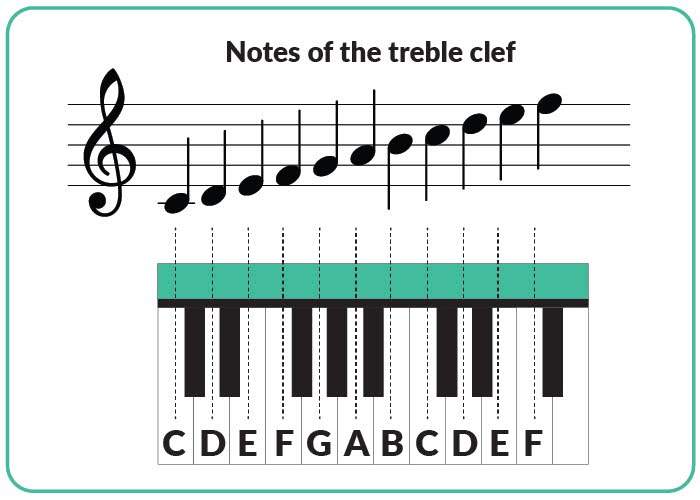
Each step up or down on the staff moves alphabetically by one letter. For example, going up from the second line, G, to the next space gives us an A, then up to the next line is B and so on. These are some handy methods to understand the treble clef note names on the staff rather than just trying to memorize them when reading piano music. Try out your newfound knowledge on one of Skoove’s beginner friendly piano lessons.
What are ledger lines?
Ledger lines are short horizontal lines added above or below a musical staff which extend its range. This allows us to read and write notes that fall outside the five main lines of the staff.
Each ledger line follows the same spacing and letter sequence as the staff, moving sequentially by step. For example, above the treble clef, the first ledger line represents A, the space above it is B, the second ledger line is C and so on.

Similarly, below the staff, ledger lines descend through G, F, E etc. As with upper ledger lines this allows musicians to read lower notes without changing clefs.
Treble clef vs. other clefs
The treble clef isn’t the only clef in music. These different clefs outline the position of different notes, keeping written music on the staff. Different instruments and situations call for the use of other clefs to make music easier to read. Let’s compare some common clefs with this handy table.
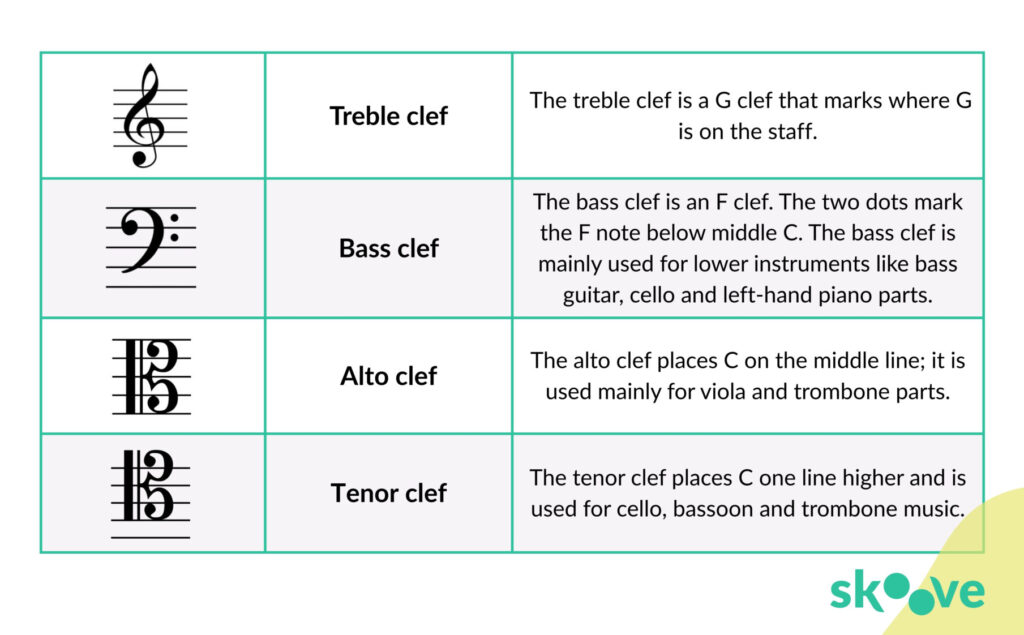
How to practice treble clef on piano?
Now you’re familiar with treble clef and how it works it’s time to learn how to practice the treble clef and incorporate all you’ve learned in this article with these top practice tips.
- Practice daily – Sight-reading improves recognition.
- Use mnemonics – Helpful memory devices reinforce the treble clef lines and spaces.
- Slow and steady– Accuracy before speed, make good eyes to piano connections.
- Recognize intervals – Spot note and interval relationships instead of reading one by one.
- Try treble clef exercises – Strengthen your right hand with targeted drills.
Make sure you put this new approach into practice by taking your best piano posture and playing through all the songs in the Piano Beginner 1 course. Intermediates should check out all the great songs from the Intermediate song courses as well!
Keep practicing treble clef with Skoove
Well done! You now know all the treble clef notes on a stave and are prepared with a few mnemonic tools to decipher the puzzle. That’s a big first step into the world of reading music. Let’s put our new found skills to work with a little practice on the Skoove app. We have everything you need to improve your treble clef skills with lessons and all your favorite piano songs. Keep up the good work and happy playing!
Explore all types of clefs
Author of this blog post
Vicki Young

Vicki Young is a pianist and singer with a degree in Music from the University of Sheffield. She lives in London, UK with her husband and son. Vicki is a communications and marketing freelancer who has worked with a range of organizations across the music and charity sectors.
Published by Lydia Ogn from the Skoove team







